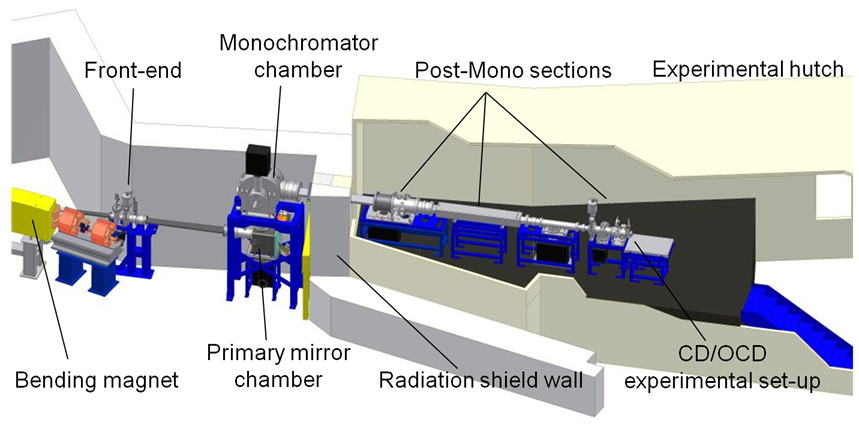UV-CD12 is a high flux vacuum ultraviolet/ultraviolet beamline for steady-state and time-resolved synchrotron radiation circular dichroism (SRCD). SRCD can be used to investigate secondary structure of proteins and other macromolecules.
The high flux and wide wavelength range of the synchrotron radiation allows a wide range of experiments, for example:
- Determination of secondary structure of proteins that cannot be crystallised.
- Investigation of the effects of the binding of ligands (e.g. drugs) on protein secondary structure.
- Study of dynamic processes such as protein folding.
- Studies of the effects of crystallisation media on protein structure.
- Determination of the secondary structure content of membrane proteins.
- Study of enzyme active site changes.
- Investigation of carbohydrate structure
The UV-CD12 beamline was conceived and designed by the Centre for Protein and Membrane Structure and Dynamics (CPMSD), a consortium of U.K. structural biologists. It was constructed at the SRS synchrotron facility of the Daresbury Laboratory and opened for users in 2003. Following the closure of SRS in August 2008, UV-CD12 was donated to ANKA in order to continue its working life.
ANKA is proud to have been selected to receive UV-CD12 against strong international competition, and gratefully acknowledges the U.K. Science and Technology Facilities Council for the gift of this excellent beamline.

